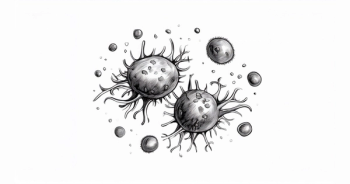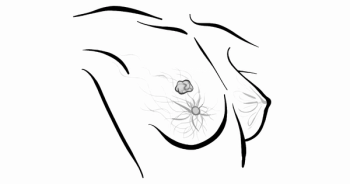
Nivolumab Plus AVD Outperforms Brentuximab Vedotin-Based Regimen in Older Patients With Classic Hodgkin Lymphoma
A recent trial reveals that nivolumab combined with chemotherapy significantly improves survival rates in older patients with advanced Hodgkin lymphoma.
For patients aged 60 years and older with advanced classic Hodgkin lymphoma (cHL), the combination of nivolumab (Opdivo) with doxorubicin, vinblastine, and dacarbazine (N-AVD) demonstrated superior progression-free survival (PFS), event-free survival (EFS), and overall survival (OS) compared with brentuximab vedotin (Adcetris) plus AVD (BV-AVD), according to findings from the phase 3 S1826 trial (NCT03907488), led by the Southwest Oncology Group (SWOG).
At a median follow-up of 2.1 years, the 2-year PFS rate was 89% in patients who received N-AVD (n = 50) vs 64% in patients who received BV-AVD (n = 49; HR, 0.24, 95%CI, 0.09-0.63; P =.001). The 2-year OS rate was 96% with N-AVD vs 85% with BV-AVD (HR, 0.16; 95%CI, 0.03-0.75; P =.005).
“To be consistent with the literature on older patients with cHL, we included in this subset analysis those who were 60 years and older,” wrote lead author Sarah Rutherford, MD, associate professor of Clinical Medicine, Division of Hematology/Oncology at Weill Cornell Medicine in New York City, and colleagues in the study, published in the Journal of Clinical Oncology.
The primary end point was PFS and secondary end points included adverse events (AEs), EFS, OS, and patient-reported outcomes (PRO)-Common Terminology Criteria for Adverse Events (PRO-CTCAE).
In total, 994 patients enrolled and 99 were deemed eligible and randomly assigned to receive 6 cycles of either N-AVD (n = 50) or BV-AVD (n =49). Overall, treatment-completion rates for N-AVD was 90.0% compared with 67.3% for patients who received BV-AVD.
At baseline, the median age was 66.2 years (range, 60.1-83.7) for the N-AVD cohort and 67.5 years (range, 60.1-81.7) for the BV-AVD cohort, and the majority of patients were female (39.0% vs 36.7%) and White (88.0% vs 81.6%). Disease staging was similar, with 34.0% of N-AVD patients and 46.9% of BV-AVD patients having stage III disease, whereas 66.0% and 53.1%, respectively, had stage IV disease.
Granulocyte colony-stimulating factor (G-CSF) was administered in 71.0% of patients on N-AVD and 98.0% patients on BV-AVD.
According to investigators, patients in the BV-AVD cohort experienced adverse events (AEs) more frequently than patients in the N-AVD cohort, with the exception of neutropenia. Specifically, 53.0% of patients who received N-AVD experienced neutropenia vs 31.9% of patients who received BV-AVD.
However, more patients on BV-AVD had grade 3 or above febrile neutropenia (N-AVD, 12.2% vs BV-AVD, 19.1%) and grade 3 and above sepsis (N-AVD, 6.1% vs BV-AVD, 21.3%). Grade 3 anemia, thrombocytopenia, and gastrointestinal AEs were more frequent with BV-AVD.
Fourteen percent on N-AVD had any discontinuation of nivolumab, and 55.3% on BV-AVD had any discontinuation BV. There were 3 deaths and 4 progressions or relapses in the N-AVD cohort compared with 10 deaths and 9 progressions or relapses in the BV-AVD cohort. The nonrelapse mortality rate was 6% (3 of 50) with N-AVD and 16% (8 of 49) with BV-AVD.
“Study S1826 is the first randomized study to show an OS benefit in older patients with cHL,” Rutherford and colleagues, concluded.









































